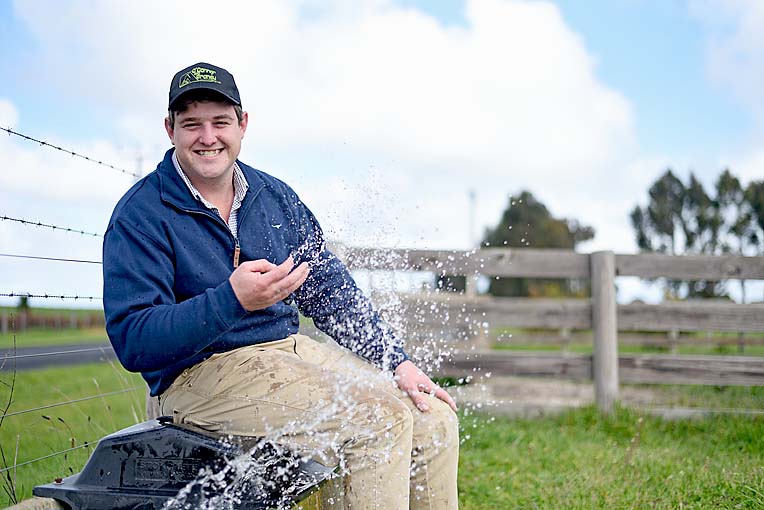

THE multi-million dollar livestock sector is facing a bumper growing season in the wake of the drenching rains that have pummelled the region over the past week.
More than 50mm of rain has fallen in the Mount Gambier district this month, which is more than two-thirds of the average September rainfall.
While the rain bursts have damaged some crops and caused headaches for dairy farmers who are in the middle of calving, the heavy soakage is expected to extend the season and replenish the region’s aquifer system.
The region’s rainfall for 2017 is now tracking to meet the long-term average, unlike other regions in the state struggling with dry conditions.
Livestock agent Nathaniel Braebairn said the season was looking positive for the hundreds of livestock producers in the region.
“We had around 146mm last month and now 52mm already in September, which is a good start to spring,” Mr Braebairn said.
He said the region was now getting rain that usually fell in June, which meant the growing season was likely to be extended into summer.
“If we get follow-up rain this month or in October, we could have a green summer,” Mr Braebairn told The Border Watch yesterday.
He said the rain should fuel greater hay yields and more feed to help finish cattle and sheep for markets.
But he said farmers would now like to see sunshine to get more growth and weight on stock.
Although the rain had damaged some bean crops in the Millicent district and caused logistical issues for farmers with muddy paddocks, he said the rain would be generally welcomed across the agricultural sector.
“Some cattle producers have been unable to get their cattle out and trucks can’t get into yards,” Mr Braebairn said.
“Some are also struggling to get hay out to cattle – it is certainly wet in some parts of the region.”
But he said the rain was a “good problem” to have given the ongoing benefits for farmers.
Regarding the markets, the livestock agent said cattle prices were continuing to hold up despite more cattle flowing from northern parts of Australia and supply outstripping demand in the processing sector.
OB Flat dairy farmer Graeme Hamilton said the persistent rain over the past week was causing problems for producers who were caught up in the busy calving period.
“Calving has been a challenge, but we never like to complain about rain,” Mr Hamilton said.
“The problem is the rain has kept coming and there has not been much fine weather to dry the conditions out.
“It would probably be better if the rain came with storm events and it was gone after that.”
He foreshadowed the season would now be extended because of the soaking rains.
Despite dry conditions impacting on farmer confidence in other parts of the state, a Rabobank survey has revealed the South East farming sector was more positive.
While farmer sentiment remained slightly negative, 22pc of South East farmers surveyed expected improved conditions in the agricultural economy and weather conditions were less of a worry.
“The South East has received good rainfall and in some areas it is actually verging on being too wet,” Rabobank SA regional manager Roger Matthews said.
“For farmers in the south-eastern part of the state, concerns have centred more on commodity prices and particularly in anticipation of easing beef prices.”
He said farmer confidence in other parts of the state was being dragged down by record low rainfall in the critical early winter planting period.







